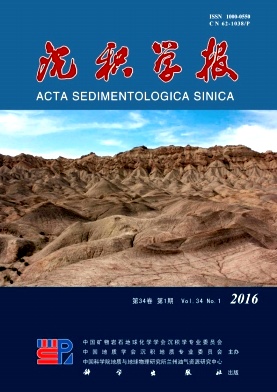Ancient River in the Houjiayao Site, Nihewan Basin and Its Archaeological Significance
doi: 10.14027/j.cnki.cjxb.2016.01.010
- Received Date: 2015-06-05
- Rev Recd Date: 2015-10-23
- Publish Date: 2016-02-10
-
Key words:
- Nihewan Basin /
- Houjiayao Site area /
- ancient river /
- ancient human survival environment /
- archaeology
Abstract: Lying on the northwest of Nihewan Basin, Houjiayao Site (40°06'2.0"N, 113°58'40.7"E) was discovered 40 years ago. But there is still a controversy about the existence age and the living environment of Houjiayao ancient human. Based on the geological investigations, electrical resistivity sounding and altitude measuring, this paper attempts to do a research on stratigraphic structure and the development of the ancient river in Houjiayao Site, and to interpret the above problems. The results are as follows: ①An ancient river, which came from Xionger mountain in the north of the Site, developed in Houjiayao Site, and its width was more than 1 km. The ancient river formed before 240 ka B.P., and disappeared in the early stage of the late Pleistocene, and its developing history ran through the entire living stage of Houjiayao ancient human. ②The Site cultural relics were not buried in the lacustrine facies, but in the oxbow lake sediments of the ancient river and clay layer which lay on the oxbow lake sediments unconformably during the period of 224~161 ka B.P., and it indicates that the Houjiayao ancient people lived here for as long as 60 ka years. ③The Site looks like a wide armchair faced southeast, and it provided a relatively mild and comfortable environment for the ancient. The ancient river provided the ancient human with water, and the superior eco-environment also provided plentiful food for the ancient human. Xionger mountain was not only the source of the ancient river, but also the producing area for high quality stone materials. The old river carried stone materials to the Site, making it easier to make stone implements. Hence, the ancient human, who lived in cold weather, were more likely to choose better habitats such as the Houjiayao Site near the ancient river. ④The old river embedded in the lacustrine facies, so the content of silt was high, and it was feculent. And the water of the oxbow lake near Houjiayao Site was clear and slow. What's more, with plentiful plants, the oxbow lake was a preferred place for all kinds of animals to get food and water. But the geomorphologic features of this oxbow lake made it hard for animals to escape when faced with dangerous situations. So ancient human had a better chance to get food from hunting near the oxbow lake than in other areas.
| Citation: | LI Lei, HUANG HuaFang, WANG Jian, XU QingHai, ZHANG CongCong. Ancient River in the Houjiayao Site, Nihewan Basin and Its Archaeological Significance[J]. Acta Sedimentologica Sinica, 2016, 34(1): 111-119. doi: 10.14027/j.cnki.cjxb.2016.01.010 |






 DownLoad:
DownLoad: